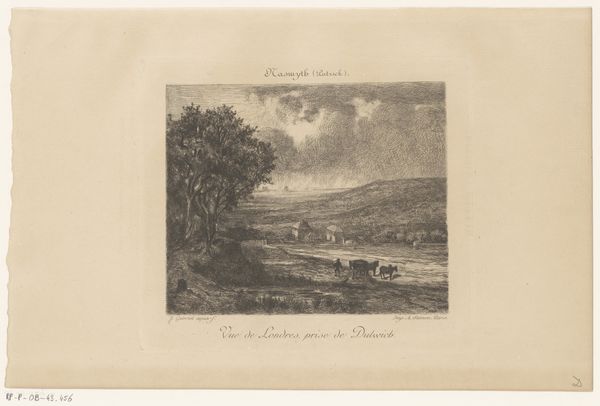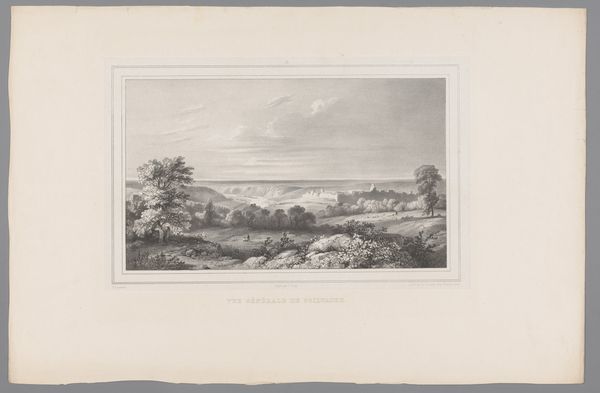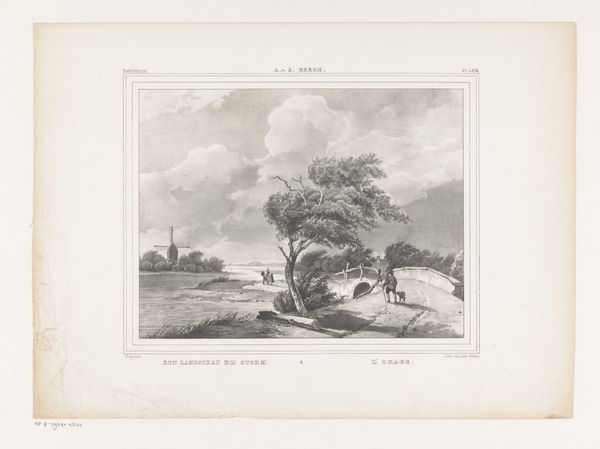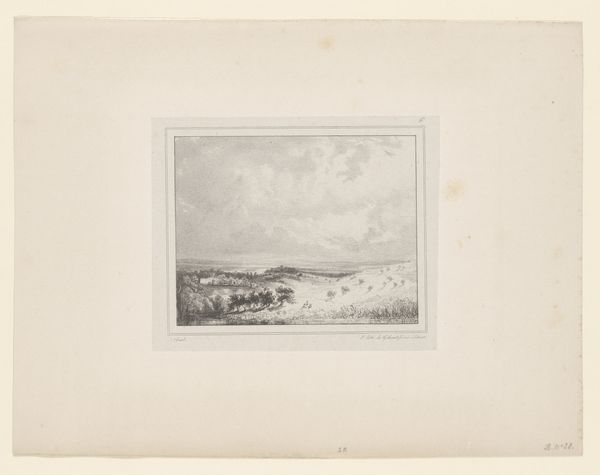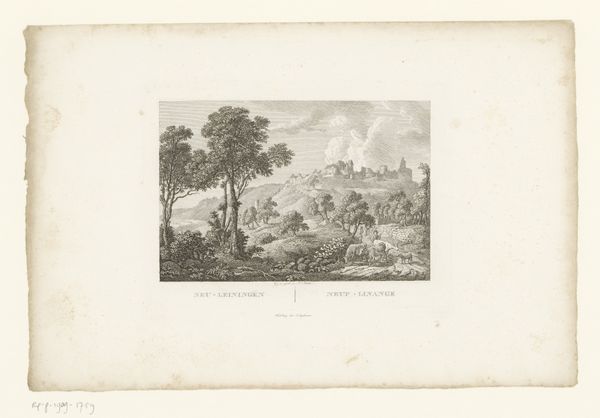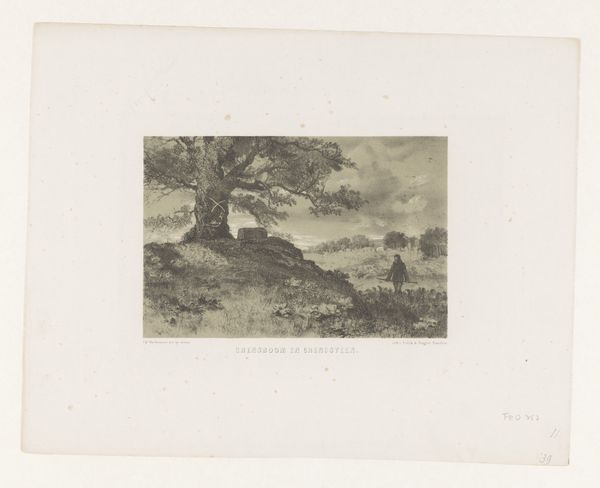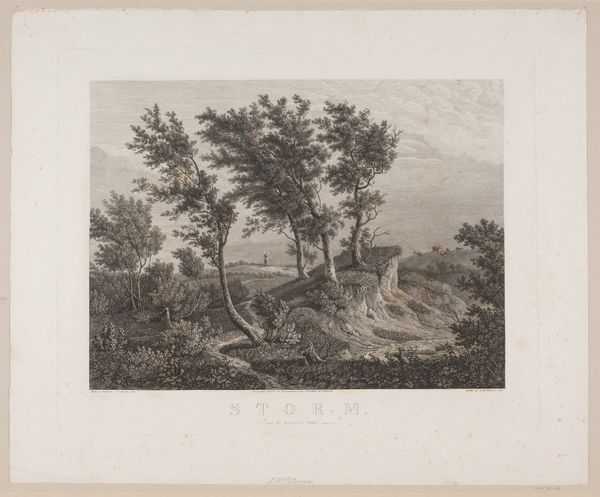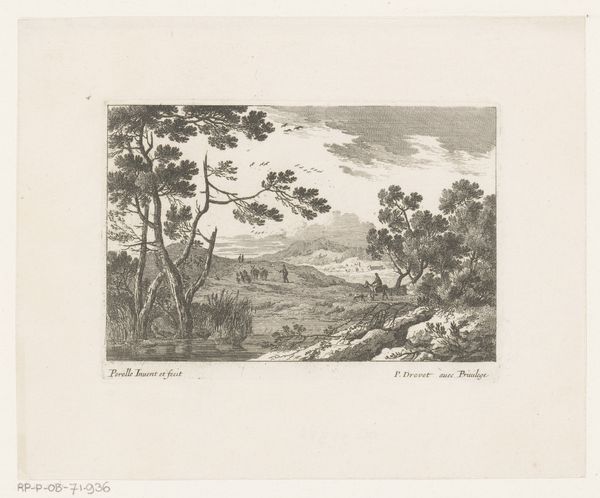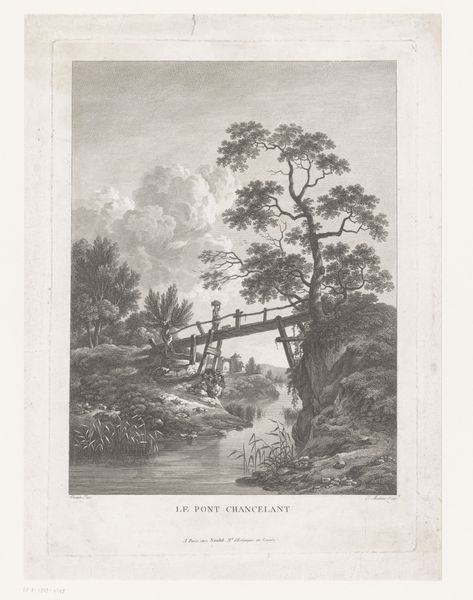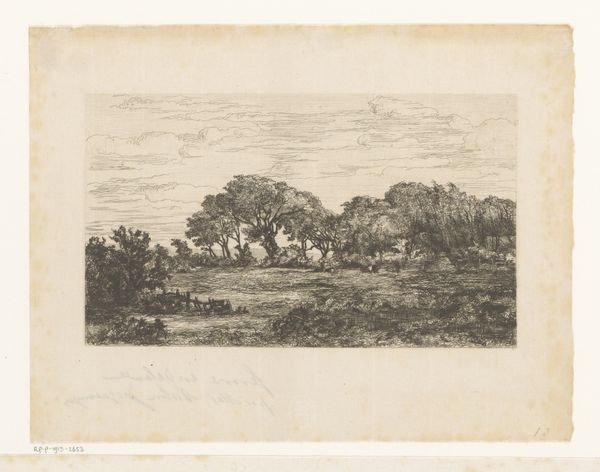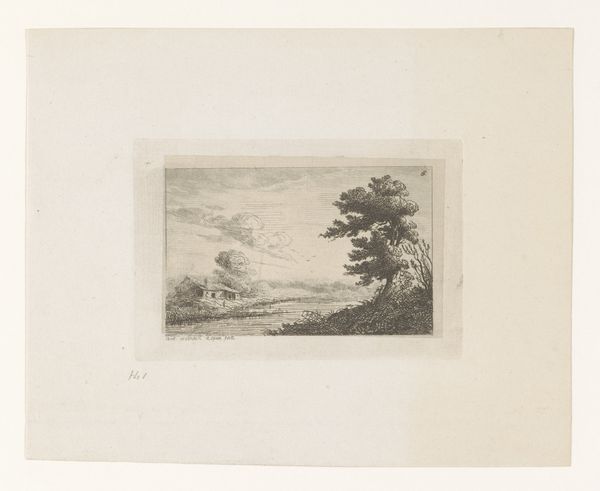
Heidelandschap met rustende wandelaar en herder met kudde c. 1847 - 1863
0:00
0:00
Dimensions: height 305 mm, width 425 mm
Copyright: Rijks Museum: Open Domain
Johannes Franciscus Hoppenbrouwers created this landscape with a resting wanderer and shepherd in the mid-19th century, using lithography. Lithography, unlike painting, is a printmaking process, and involves a very different approach to image making. The artist begins with a smooth stone or metal plate, drawing an image with a greasy crayon. The stone is then treated with acid, which fixes the drawing. When dampened, the stone will repel ink in all areas except where the crayon has been applied. This allows the image to be printed. Hoppenbrouwers employed lithography to render tonal variations and subtle details, essential for capturing the subtleties of the Dutch landscape. His choice of this reproductive medium suggests a desire to make landscape imagery more accessible to a wider audience, catering to the growing middle class with an interest in art and nature. Understanding the material and process helps us to see this artwork not just as a pretty scene, but as an object deeply embedded in the social and economic context of its time.
Comments
No comments
Be the first to comment and join the conversation on the ultimate creative platform.

